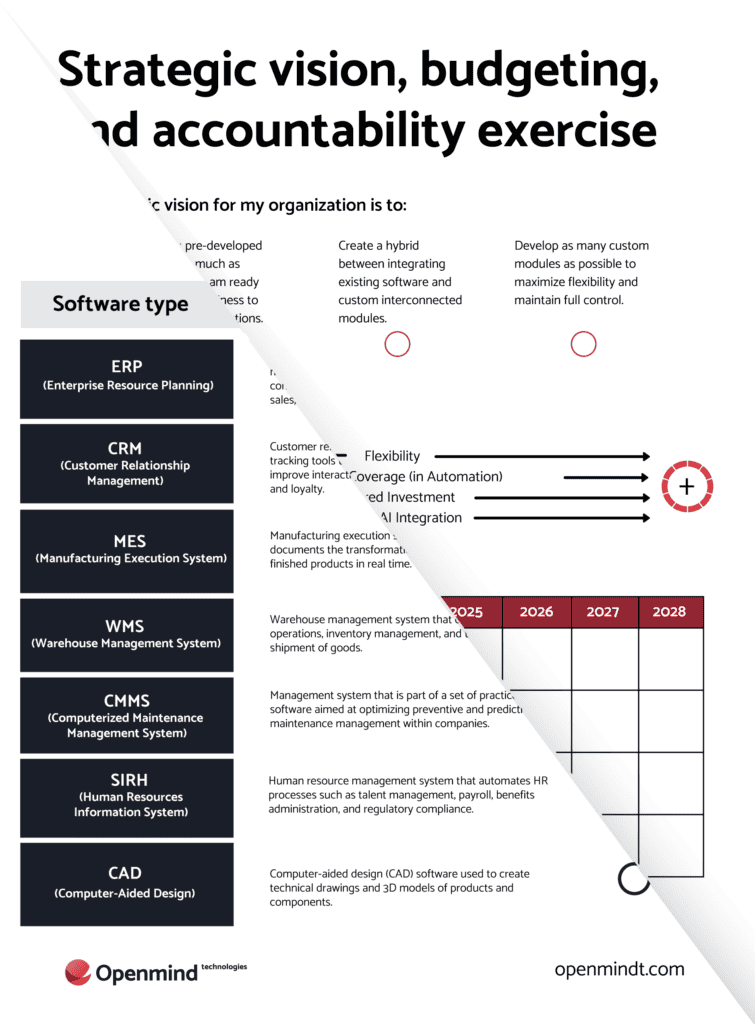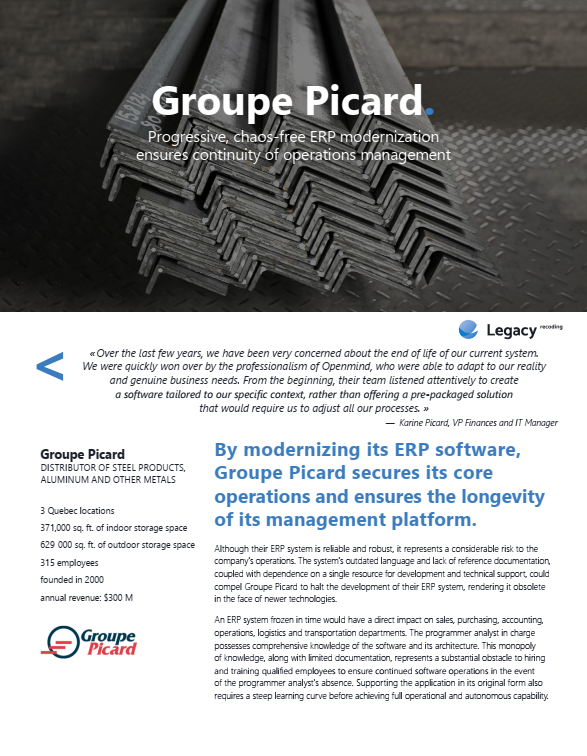Elevate your manufacturing strategy with key resources
Download our Technological Maturity Self-Assessment & Strategic Vision Exercise tools to assess your software ecosystem profile and to plan for future growth.

When it comes to custom development, legacy applications represent both a crucial pillar and a persistent challenge for many companies. These outdated software systems, often at the heart of operations, can pose unique challenges, particularly in sectors such as manufacturing and distribution, where the use of ERP systems is widespread.
In this article, we dive into the complexities of legacy applications, exploring their definitions, implications and paths to modernization for the companies that use them.
Definition of legacy applications
Legacy applications, also known as legacy systems, refer to hardware, software or systems that continue to be used by an organization, even if they are from an earlier generation. These systems encompass a whole range of components, including hardware, software and processes, which have become obsolete over time, but are still an integral part of the company’s day-to-day operations.
Recognizing the presence of a legacy system within a company is essential to gaining insight into its technological landscape and the potential challenges it may face. This understanding enables companies to assess the impact of outdated technology on their operations, and design effective modernization, software development, and improvement strategies.
Why legacy application still exists?
Legacy systems and applications persist for several reasons. Firstly, their functionality may still be satisfactory, leading companies to hesitate to update or replace them entirely. Additionally, there may be a fear of potential disruptions during major updates, which can discourage companies from taking action to modernize their systems.
Furthermore, the departure of original developers or loss of adequate documentation can make the operation of these systems unmanaged, further complicating modernization efforts. Moreover, updates may be viewed as too costly or complex, especially if they are done in a monolithic manner and require significant downtime.
Finally, there may be an underestimation of the time needed to completely replace a legacy system, leading to procrastination in modernization efforts.

Download our Technological Maturity Self-Assessment & Strategic Vision Exercise tools to assess your software ecosystem profile and to plan for future growth.

Issues posed by legacy applications
Legacy systems pose several issues for the companies that use them:
Subscribe to receive our exclusive updates directly to your email.

How to manage a legacy application: what are the options?
In conclusion, legacy applications represent a crucial technological asset for many companies, particularly those operating in the manufacturing or distribution sectors. However, they are not without their challenges. Companies need to address issues of performance, adaptability and security to ensure their success in an ever-changing technological landscape.
Application modernization is a viable solution to these challenges. By rewriting these applications, companies can preserve essential system functionality while overcoming the limitations associated with legacy technology. This approach makes it possible to integrate modern functionalities, improve performance and strengthen security measures, enabling companies to be more efficient and competitive in the digital age.

Discover how a major steel distributor protected its operational core by modernizing its ERP system

Tell us more about your needs so that we can better route your project to our specific SWAT team.
1
During the brainstorming phase, we work with you to identify potential solutions to your business challenges to generate the technology response that aligns with your business objectives.
2
Through our requirements gathering process, we work closely with you to define and prioritize your needs, ensuring that our solutions are tailored to meet your specific requirements.
3
This phase marks the beginning of our partnership. We’ll finalize the project plan and establish clear communication channels to ensure a smooth and successful project execution.